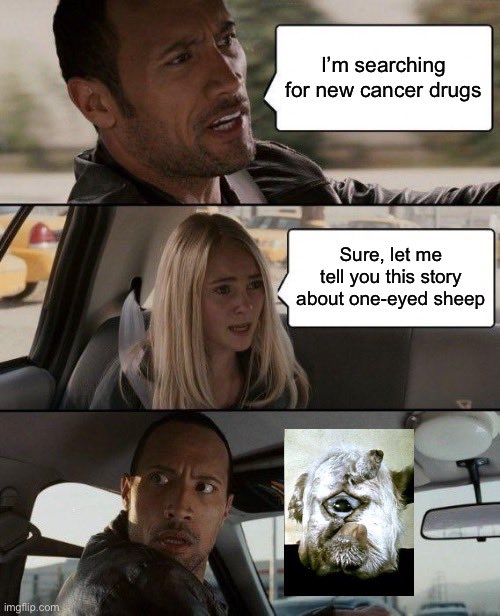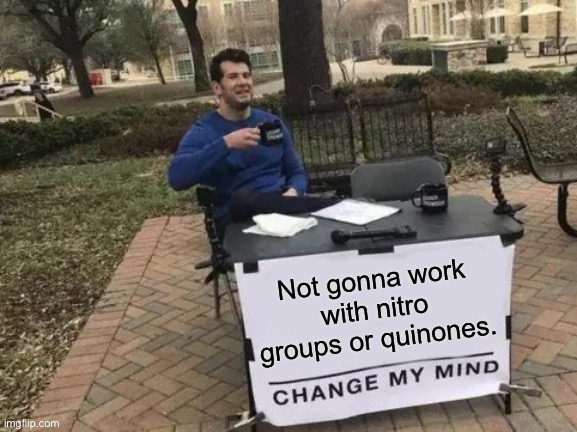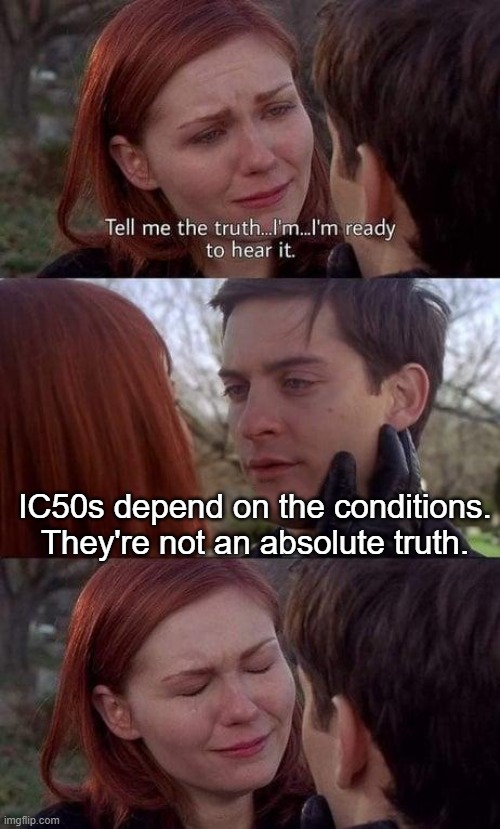
TPD-med chem-hiking-cocktails / while I have a connection to Arvinas, all opinions expressed are mine and do not represent the views or positions of the company
2 subscribers
How to get URL link on X (Twitter) App


 Usual disclaimer: all thoughts and opinions in this post are my own, and don’t necessarily reflect the opinions of my employer. This thread will feature a higher proportion of opinion than normal, but with reasoning supplied. 2/
Usual disclaimer: all thoughts and opinions in this post are my own, and don’t necessarily reflect the opinions of my employer. This thread will feature a higher proportion of opinion than normal, but with reasoning supplied. 2/

 Usual disclaimer: all of this thread is my own thoughts and opinions on the subject, and does not necessarily reflect the views of my employer. Your mileage may vary. Some restrictions may apply. 2/
Usual disclaimer: all of this thread is my own thoughts and opinions on the subject, and does not necessarily reflect the views of my employer. Your mileage may vary. Some restrictions may apply. 2/

 Usual disclaimer: everything in this thread is my observations based on 20+ years of personal experience at pharmas big and small, and should not be construed as reflecting the opinions and practices of, nor an endorsement by, my employer. 1.5/
Usual disclaimer: everything in this thread is my observations based on 20+ years of personal experience at pharmas big and small, and should not be construed as reflecting the opinions and practices of, nor an endorsement by, my employer. 1.5/

 If your phone interview goes well, the hiring manager will usually invite you for a site interview. Pre-pandemic, that almost always meant traveling to the pharma R&D site for the interview. These days, it may also be done virtually on Zoom or Teams instead. 2/
If your phone interview goes well, the hiring manager will usually invite you for a site interview. Pre-pandemic, that almost always meant traveling to the pharma R&D site for the interview. These days, it may also be done virtually on Zoom or Teams instead. 2/


 Usual disclaimer: all opinions expressed herein are my own, and do not necessarily reflect the opinions of my employer. Nor am I a medical doctor slinging any medical advice. Any errors or omissions are because I’m just a simple chemist. 2/
Usual disclaimer: all opinions expressed herein are my own, and do not necessarily reflect the opinions of my employer. Nor am I a medical doctor slinging any medical advice. Any errors or omissions are because I’m just a simple chemist. 2/
https://twitter.com/KRHornberger/status/1592489494439395330

 1. Am I happy — at work, at home, and in between? A high-level question that allows for further introspection into root cause.
1. Am I happy — at work, at home, and in between? A high-level question that allows for further introspection into root cause.
 For a refresher, please first take a gander at this first thread on structural alerts, where I talked in depth about redox cycling. A lot of these concepts will reappear and be further elaborated upon here. 2/
For a refresher, please first take a gander at this first thread on structural alerts, where I talked in depth about redox cycling. A lot of these concepts will reappear and be further elaborated upon here. 2/https://twitter.com/KRHornberger/status/1485948686412746762

 Usual Disclaimer: this thread represents my own views and opinions, not necessarily those of my employer. 1.5/
Usual Disclaimer: this thread represents my own views and opinions, not necessarily those of my employer. 1.5/

 References first. There are lots of papers and reviews on this topic, but a cogent and relevant one is this one by Strelow. Not the only articulation of k_inact/KI ratios out there, but it’s a really good one. 2/
References first. There are lots of papers and reviews on this topic, but a cogent and relevant one is this one by Strelow. Not the only articulation of k_inact/KI ratios out there, but it’s a really good one. 2/
 References first. A key one for this discussion is this 1977 paper from Pang and Rowland, which describes the well-stirred model of clearance in considerable detail. (Not the first paper on the model, but maybe the most thorough.) 2/
References first. A key one for this discussion is this 1977 paper from Pang and Rowland, which describes the well-stirred model of clearance in considerable detail. (Not the first paper on the model, but maybe the most thorough.) 2/
 References first. There’s really one that’s central for this discussion, this seminal 1973 masterwork from Cheng and Prusoff. 2/
References first. There’s really one that’s central for this discussion, this seminal 1973 masterwork from Cheng and Prusoff. 2/
 I’ve argued previously that human dose is the master optimization parameter in medicinal chemistry. Like death, it can’t be cheated. All variables come together in this one number. 2/
I’ve argued previously that human dose is the master optimization parameter in medicinal chemistry. Like death, it can’t be cheated. All variables come together in this one number. 2/ 

 References up front. A great one on how to properly use plasma protein binding (PPB) to interpret PD/efficacy data and NOT use PPB as an optimization parameter. This paper is a true classic. I’ll never be able to fully repay the debt I owe to it. 2/
References up front. A great one on how to properly use plasma protein binding (PPB) to interpret PD/efficacy data and NOT use PPB as an optimization parameter. This paper is a true classic. I’ll never be able to fully repay the debt I owe to it. 2/
